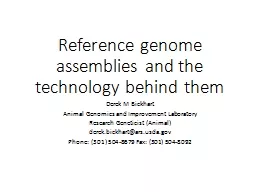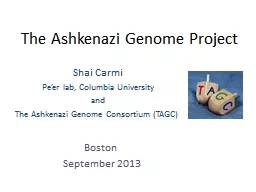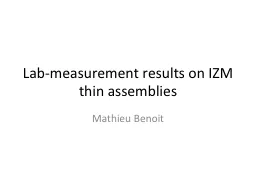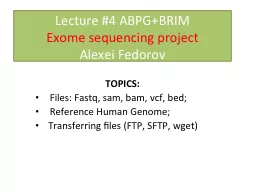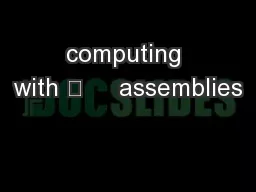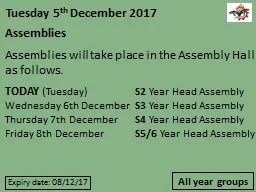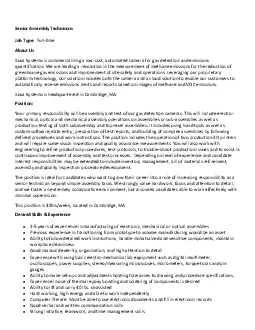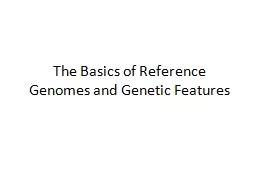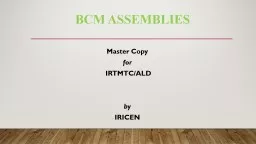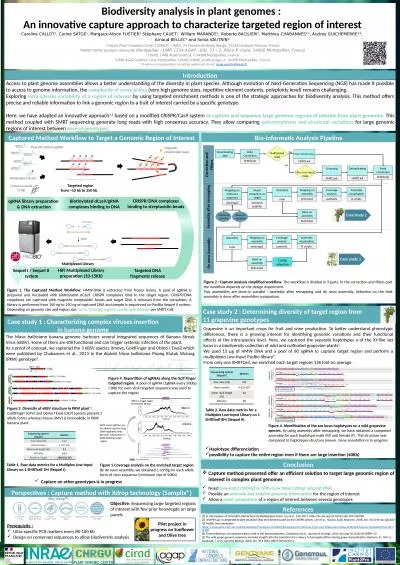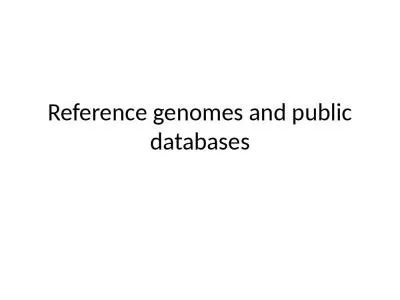PPT-Reference genome assemblies and the technology behind them
Author : phoebe-click | Published Date : 2020-04-03
Derek M Bickhart Animal Genomics and Improvement Laboratory Research Geneticist Animal derekbickhartarsusdagov Phone 301 5048679 Fax 301 5048092 USDA disclaimer
Presentation Embed Code
Download Presentation
Download Presentation The PPT/PDF document " Reference genome assemblies and the tec..." is the property of its rightful owner. Permission is granted to download and print the materials on this website for personal, non-commercial use only, and to display it on your personal computer provided you do not modify the materials and that you retain all copyright notices contained in the materials. By downloading content from our website, you accept the terms of this agreement.
Reference genome assemblies and the technology behind them: Transcript
Download Rules Of Document
" Reference genome assemblies and the technology behind them"The content belongs to its owner. You may download and print it for personal use, without modification, and keep all copyright notices. By downloading, you agree to these terms.
Related Documents

